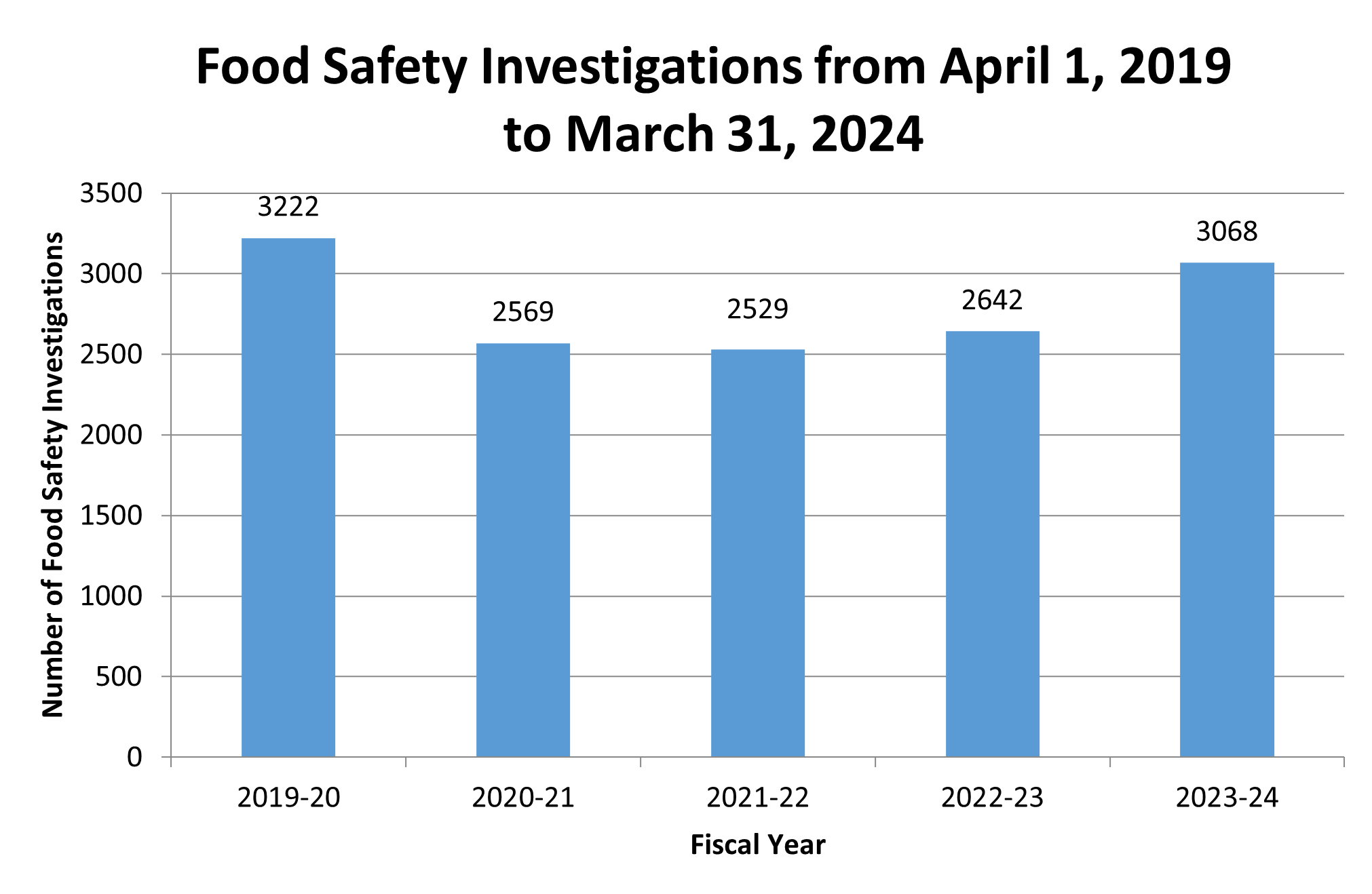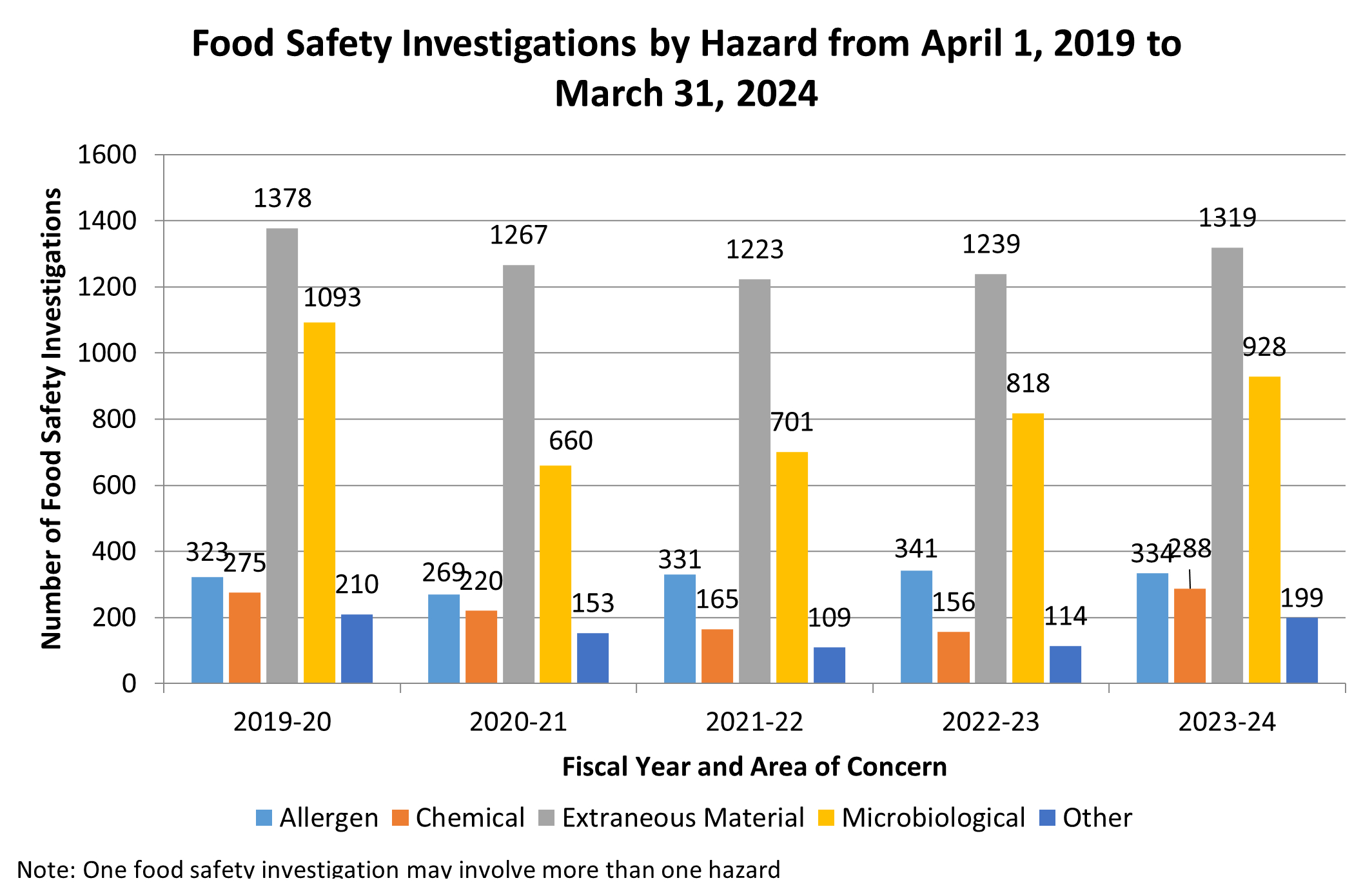The food safety investigation and recall process is initiated when there is reason to believe that a potentially contaminated food has reached the marketplace.
The Canadian food supply is one of the safest in the world. However, no food safety system can guarantee zero risk. At any point in the production system, food can become contaminated with bacteria, viruses, parasites, chemicals, undeclared allergens or material such as glass or metal fragments.
Food safety investigations are complex and involve several essential steps to determine if a food recall is required and what food to recall. When dealing with potentially unsafe food, the Canadian Food Inspection Agency (CFIA) acts as quickly as possible to collect information and make decisions. Food safety investigations are carried out by a variety of experts at the CFIA, including inspection staff, and will continue until complete and sufficient information is gathered to determine if a risk exists and develop a strategy to mitigate the risk.
There are several triggers that start a food safety investigation, which could lead to a food recall. These include, but are not limited to:
- suspected or confirmed foodborne illness outbreak
- food test result
- CFIA findings (for example, inspection, audit, etc.)
- complaints from consumers, industry, associations or referred by other government departments
- company-initiated recall
- recall in another country
- referrals from other federal/provincial/territorial, municipal and international government departments or food safety organizations (for example, the International Food Safety Authorities Network), law enforcement or the medical community
- traditional or social media
The objectives of a food safety investigation are:
- to identify which food may be contaminated and with what hazard
- to determine if there is a health risk
- to determine how far in the food distribution system (for example, to the manufacturer, importer, distributor, retailer or consumer level) potentially unsafe food has been distributed
- to determine if a recall and/or other action (such as, detention of the food in question or suspension of an operating licence) is needed to protect consumers
- to identify the root cause of the problem, if possible
On average, the CFIA conducts approximately 2,806 food safety investigations each year.
Food safety investigations

Description for bar graph – April 2019 – March 2024 table
| - | Apr 19 – Mar 20 | Apr 20 – Mar 21 | Apr 21 – Mar 22 | Apr 22 – Mar 23 | Apr 23 – Mar 24 |
|---|---|---|---|---|---|
| Total food safety investigations | 3222 | 2569 | 2529 | 2642 | 3068 |
Food safety investigations by hazard

Description for bar graph – April 2019 – March 2024 table
| - | Apr 19 – Mar 20 | Apr 20 – Mar 21 | Apr 21 – Mar 22 | Apr 22 – Mar 23 | Apr 23 – Mar 24 |
|---|---|---|---|---|---|
| Allergen | 323 | 269 | 331 | 341 | 334 |
| Chemical | 275 | 220 | 165 | 156 | 288 |
| Extraneous material | 1378 | 1267 | 1223 | 1239 | 1319 |
| Microbiological | 1093 | 660 | 701 | 818 | 928 |
| Other | 210 | 153 | 109 | 114 | 199 |
Glossary
- Allergen
- A food product may contain ingredients such as peanuts, milk or eggs that are not identified or are incorrectly identified on the label and that can cause adverse reactions in people who are allergic to the item.
- Chemical
- A food product contains chemical residues such as lead, mercury or pesticides that, at certain levels, can affect human health.
- Extraneous material
- A food product contains material from an outside source, such as metal, glass or hair. These are not necessarily a risk to human health.
- Microbiological
- A food product is contaminated by micro-organisms, such as bacteria, viruses or parasites, which have the potential to cause illness.
- Other
- A food product is of concern due to the presence of a hazard that does not fall within one of the above categories. Examples include non-permitted ingredients, nutrition concerns and potential tampering.